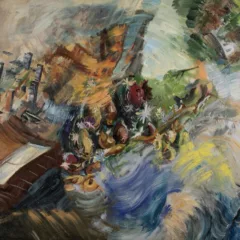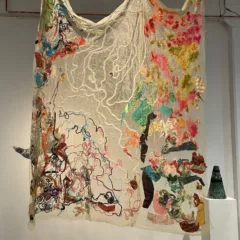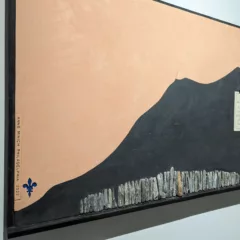Project Arts Centre, Dublin, is better known as a performance venue than as a visual arts space (I’m doing my best to change this), but this summer, for the first time, the art moved beyond the gallery to occupy the entire building. The exhibition Conjuring for Beginners (through August 12, 2012) includes eight artists, three of whom inhabited Project’s black box performance space which on this occasion required no house lights. I was particularly taken with Janice Kerbel’s Kill the Workers!; for the many of us unfamiliar with theater jargon, her title is the expression used by lighting crews as their cue to turn off the backstage work lights, which otherwise would impinge on the stage lighting. The title alerts us that the performance is about to begin; but in this performance, the stage lighting is given the leading, rather than supporting role. Indeed, it is a solo performance.
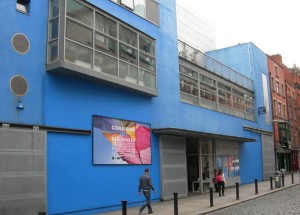
It’s a challenge to convey the impression of a silent, time-based work whose protagonists are several geometric light projections on a theater floor that sometimes make rapid entrances, but always exit as slow fades. Writers talking about Ad Reinhardt’s black paintings almost always discuss the fact that looking at them requires time, and hence, the awareness of time as a theme of the paintings. The same could be said of Kill the Workers! The piece moved too slowly to present much interest to anyone just poking his head into the space; but for those who watched the entirety, the piece provoked a rich variety of thoughts and responses. It made me think about the attention I give (or don’t give) to other artwork. Kerbel worked within a narrow chromatic range; one white form is warmer, another cooler, with one soft blue and red aura around the forms that may have been an after-image, created by the viewer’s eyes rather than the artist’s light sources. Because of this subtlety, the piece forced me to ponder issues of sight and visual memory.
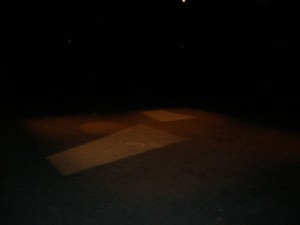
Kill the Workers! is essentially a play for theatrical lighting. As such it resonates with more than a hundred year’s interest in an abstract art of moving light: Loie Fuller’s dancing, where most of the visual interest came from the colored lights projected on her billowing costume; Gordon Craig’s idea of lighting being an equal partner to the actors on stage; Thomas Wilfred’s Lumia instruments; Moholy-Nagy’s various three-dimensional and film works employing light and cast shadows; and abstract animated film, beginning in the 1920s with Walter Ruttmann, Hans Richter, Viking Eggling, and Marcel Duchamp, through Oskar Fischinger, Len Lye, and continuing into the present.
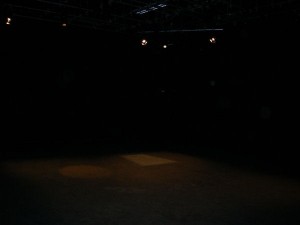
Kill the Workers! is one of the rare artworks whose form is original, yet that isn’t the source of my interest; theatrical lighting designers would probably have a different response. I am still impressed that Kerbel made so much of so little and that I was captivated by abstract forms in slow motion, with no sound track to support them. When the lights went up I started a conversation with the only other visitor who watched the entire work. He turned out to be Dennis McNulty, an Irish artist who shows internationally and lives in Berlin. We agreed we’d seen something special.


